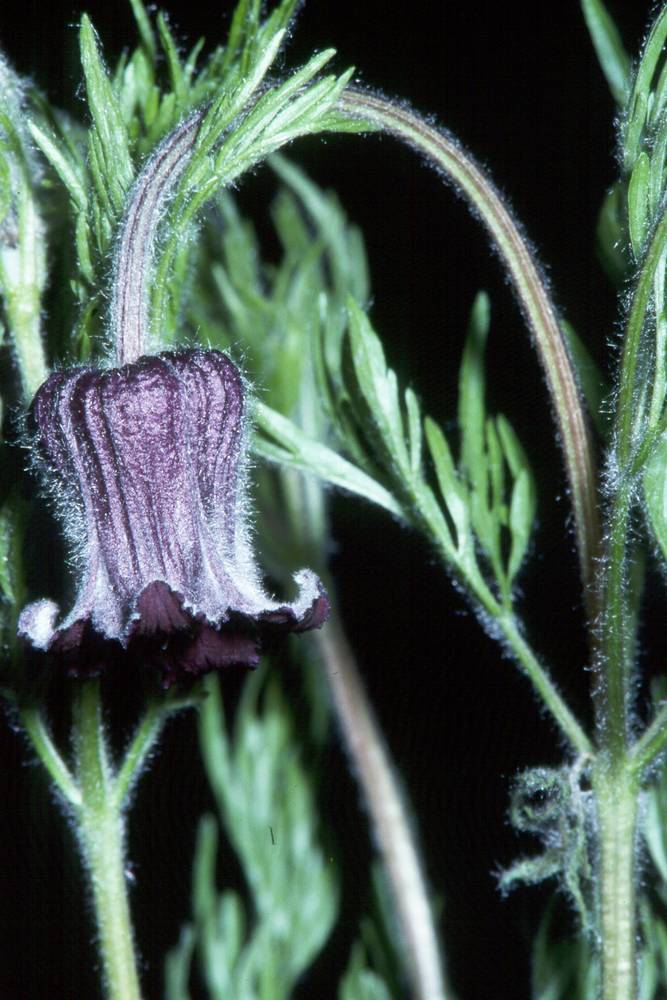
[This taxon will be assessed for treatment in volume 3 of Flora of Oregon, which is not yet published.]
as described under Clematis hirsutissima
Stems erect, not viny, 1.5-6.5 dm, hirsute (sometimes sparsely so in var. hirsutissima ) or densely short, soft-pubescent to nearly glabrous. Leaf blade 2-3-pinnate; leaflets often deeply 2-several-lobed, if lobed than lateral lobes usually small and distinctly narrower than central portion, leaflets or lobes linear to lanceolate, 1-6 × 0.05-1.5 cm, thin, not prominently reticulate; surfaces sparsely to densely silky-hirsute, not glaucous. Inflorescences terminal, flowers solitary. Flowers broadly cylindric to urn-shaped; sepals very dark violet-blue or rarely pink or white, oblong-lanceolate, 2.5-4.5 cm, margins narrowly expanded distally, 0.5-2 mm wide, thin, distally ± crisped, tomentose, tips obtuse to acute, slightly spreading, abaxially usually densely hirsute, occasionally moderately so. Achenes: bodies densely long-pubescent; beak 4-9 cm, plumose.The varieties of Clematis hirsutissima , although highly dissimilar in their extreme forms, intergrade extensively in Wyoming, Colorado, and Utah.